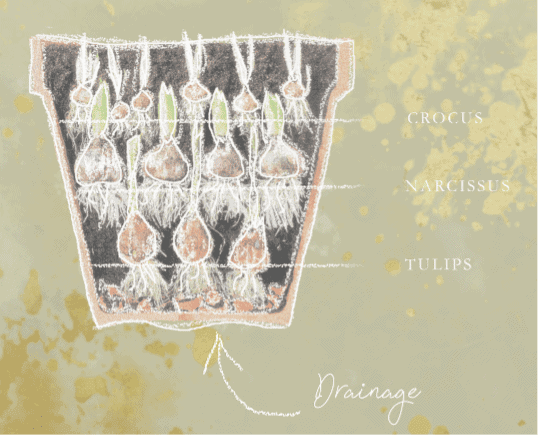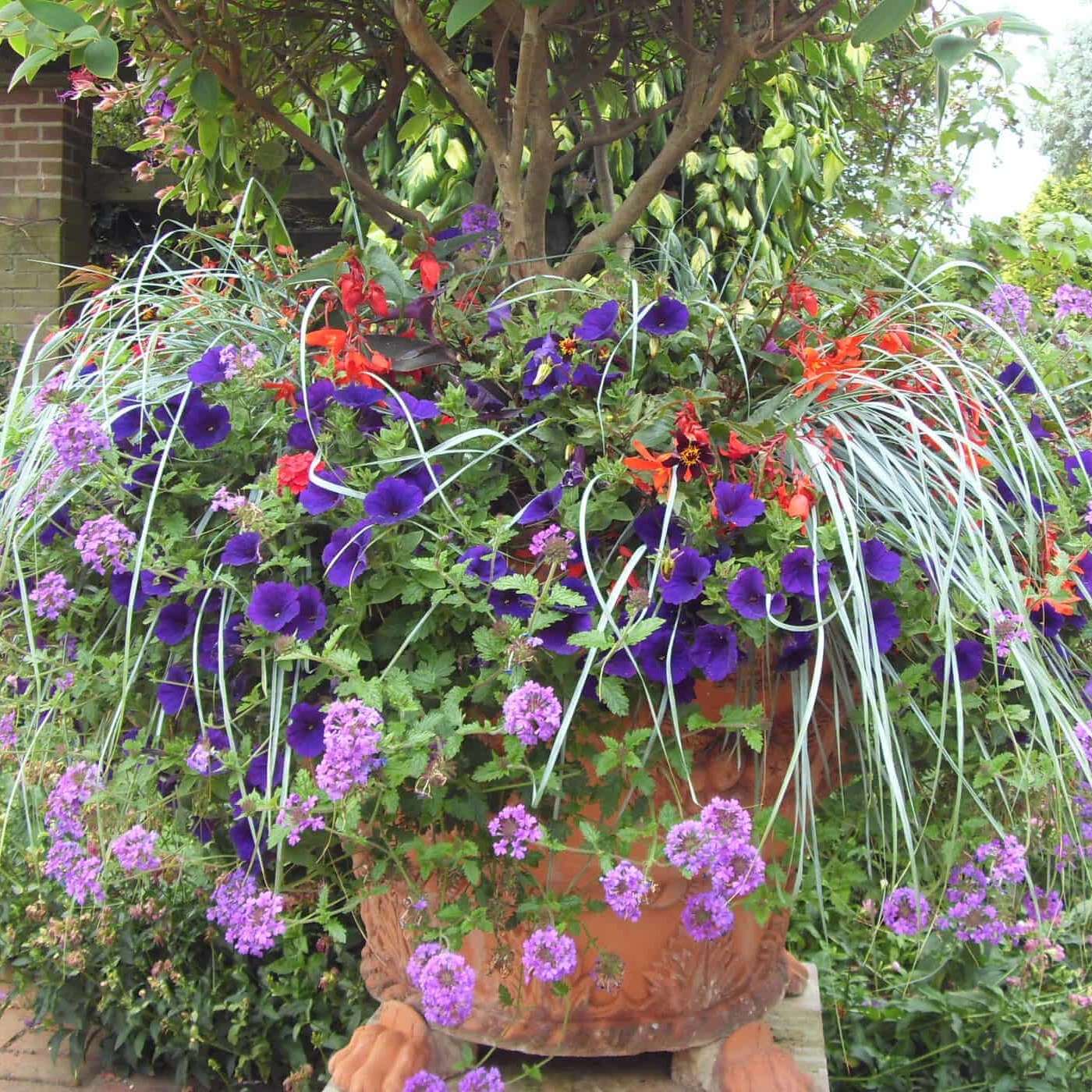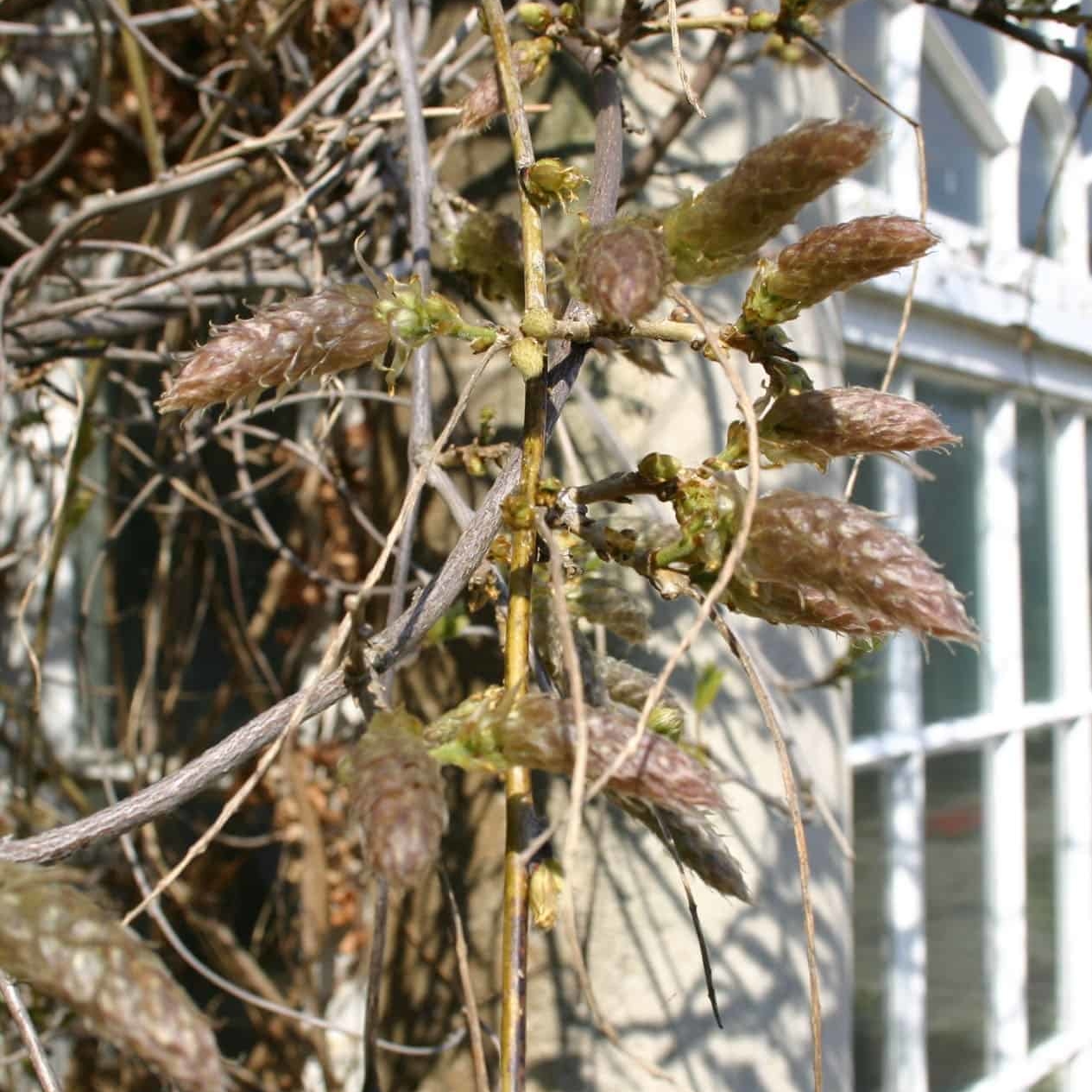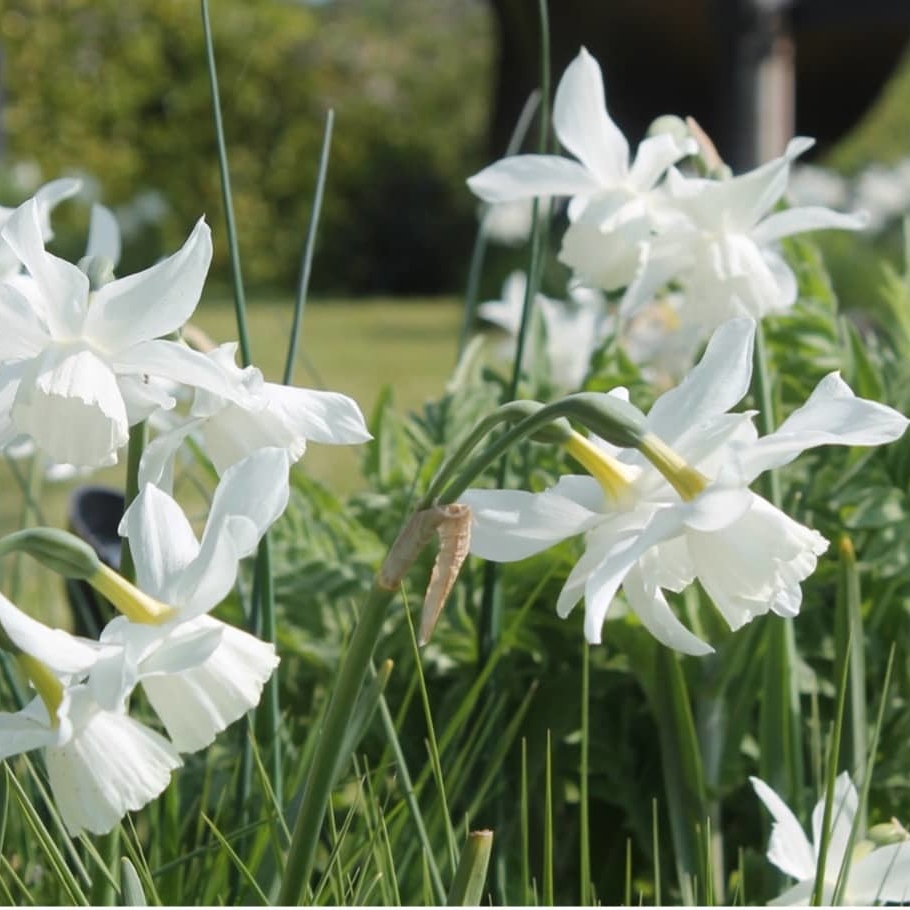Bulbs
If you are anything like us at Bestall & Co you will understand how special and positive it is to plant some bulbs in autumn. Those rather small and bland, dried up spheres hold so much hope with their promise of colour, scent and spring days ahead. Bulbs are one of the first plants to wake up and signal that winter is over and lighter, warmer days are on the horizon. It is often so easy to forget to order and plant them while summer still lingers in the air, but we promise you it is something you will never regret doing! Bulb planting season is upon us again and whether you have a garden full already and want to refresh your collection with something different or have never got around to planting any (even though you say you will every year); this article should provide you with everything you need to know to get started!
Visit our online shop and order your bulbs today
What is a bulb?
Bulb noun (PLANT) a rounded underground storage organ present in some plants, consisting of a short stem surrounded by fleshy scale leaves, lying dormant over winter.
The general definition of a bulb is ‘any plant that stores its complete life cycle in an underground storage structure’ however botanically speaking this isn’t exactly true as you will soon learn.
Bulbous plants are usually perennials which have a period of growth and flowering followed by a period of dormancy where they die back to form a storage structure underground at the end of each growing season. A bulb is actually a modified stem made up (in simple terms) of fleshy leaves which function as food reserves to enable a plant to lie dormant when growing conditions are unfavourable (such as winter) and resume active growth when favourable conditions return.
Are you ready for a short botany lesson to get more acquainted with bulbs and a few of their cousins?
True Bulbs -Yes there are such things as ‘true bulbs’ – daffodils, tulips, muscari, and snowdrops to name a few. These often have a papery skin or tunic on the outside, much like an onion. To identify a ‘true bulb’ look for a rounded shape which narrows to a point on the top. Leaves and flower stems appear from this point and the flat part at the bottom (called a basal plate) is where roots grow. True bulbs are made up of rings (called scales), which are modified leaves that store food. Slice open a true bulb, such as a hyacinth just before it starts growing and you will find a miniature flower in the centre surrounded by leaves. True bulbs produce new bulbs (offsets) which grow from the basal plate. When they get big enough, which can often take several years, these offsets or daughter bulbs produce flowers on their own.
If any of the characteristics that identify true bulbs are missing, the plant isn’t a true bulb. Instead, it’s a corm, tuber, tuberous root, or rhizome.
Corms -Popular corms include crocus, crocosmia, gladiolus and freesia. Corms have a tunic and a basal plate at the bottom with one or more growing points at the top. Bulbs and corms both have a definite vertical orientation (pointy end up, flat base down). However, corms contain no rings when cut apart. When you plant a corm, it is used up for growing the flower but before it withers away, a brand-new corm (sometimes several) forms from the basal plate and replaces the mother corm. This means the plant often naturalises very well and spreads each year.
Tubers – You will most likely come into contact with a very popular tuber in the kitchen – the humble potato! Other tubers include anemones, begonia and cyclamen. Tubers have no tunic and lack a basal plate so distinguishing the top from the bottom may be difficult. If you’re not sure, plant it sideways and the tuber will decide which direction to grow. Most tubers root from the bottom and have several growing points called eyes (which can be seen if you leave your potatoes in the cupboard for too long). Tubers, like corms are made of modified stem but don’t produce new tubers and usually just get bigger each year.
Which bulbs to choose?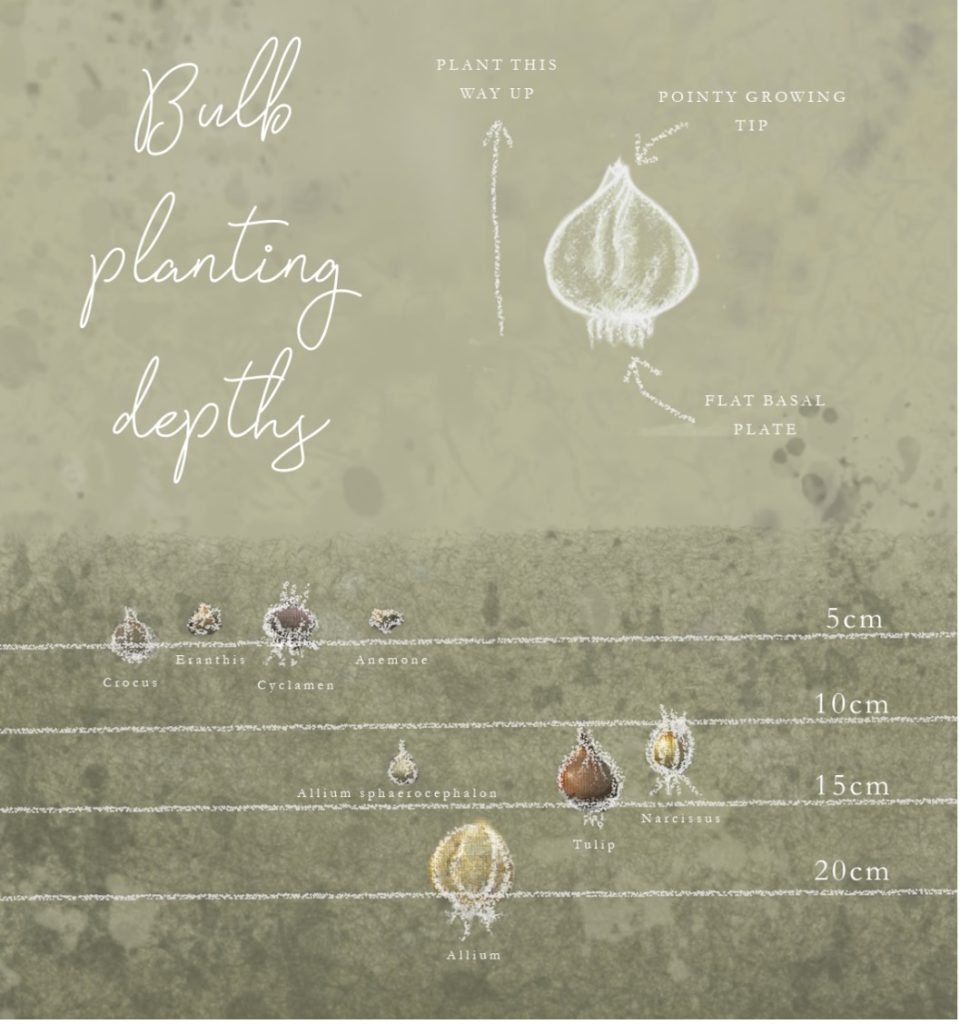
Now you are one step closer to becoming a bulb expert you may be pondering which bulbs to grow? There is so much choice out there which can make it very difficult to decide. At Bestall & Co we have our very own bulb collection, ready to pre order now, which should help narrow things down. The collection consists of our favourite tried and tested varieties that we use reliably, time and again in the beautiful gardens we design and implement. Ideal for a range of situations from planters to borders, woodland to meadow.
Like all plants, bulbs need specific growing conditions to thrive. Most prefer a well-drained soil in full sun to partial shade however if this doesn’t sound like your garden don’t worry – there are some exceptions to the rule.
For wet soils try Camassia which produce tall spires of blue or white star-like flowers in late April to early June. Native to the damp meadows and woodland edges in the Pacific Northwest of the US. They are completely hardy, coming back year after year and are great for pollinating insects. Also perfect for naturalising in grass to add early colour to a meadow area.
For dry and shady spots or planting under trees and shrubs our signature woodland blend is perfect. Containing a mix of large coloured crocus, wood anemone, spring cyclamen and winter aconites it provides a great starting point to grow a cheerful carpet of uplifting colour in early spring. Each variety is great for naturalising so the show will get better every year.
Most bulbs flower in the early part of the year from February to May starting with snowdrops in January closely followed by the woodland bulbs, daffodils in early spring (the dwarf variety Narcissus ‘February Gold’ is one of the earliest to flower and a favourite of ours), then tulips in April and May. If yours fizzle out towards the end of spring, consider adding in some Alliums which will extend the season right into August if you choose the right varieties. They bring such pizazz to the garden with their bright and sculptural globe flower heads. The varieties in our Allium Blend provide a brilliant succession of colour from early June with Allium cristophii followed by Allium aflatunense ‘Purple Sensation’ in July and Allium sphaerocephalon in August, each leaving behind a wonderful seed head which can be dried to use in floral arrangements of left in the garden for further interest.
Tulips
Most bulbs are perennial and will come back every year if they are happy. Daffodils, crocus, wood anemone and alliums fit into this category. Tulips are technically perennial too, but the large showy hybrids are often treated as annuals as they do not reliably flower well in subsequent years after the first. Their ancestors, the species tulips are reliably perennial but are much shorter and not as dramatic as the modern varieties.
New clients have very often lost faith growing tulips in their gardens when they come to us, and you would be forgiven for agreeing that tulips are the divas of the bulb world. It is true that they have a reputation for being unreliable and high maintenance, which is a shame because tulips create so much impact at a time of year where colour is limited, and the garden is still coming out of its winter dormancy.
They look stunning during spring planted en-mass through the border, mixed in with the foliage of upcoming plants and early flowering perennials such as Geum, Euphorbia and Pulmonaria varieties. They are available in any colour (except blue), displaying flashes, frills and in some cases – the most fabulous scent! If you still need convincing, make a visit to the Hepworth Garden in Wakefield during April and May, which has a spectacular display of brightly coloured modern tulip varieties, showing how they can be used to great effect in such a contemporary and breath-taking way.
If you have ever planted tulips in a border and wondered why they made a no show the following year, some common reasons could be that they were planted too shallow, had been predated or rotted away during a wet winter. A good tip to encourage repeat flowering with Tulips is to plant them deeply, between 20cm and 30cm in a well-drained spot with grit added to the bottom of the planting hole. This is because tulips are more likely to focus their energy on producing bulblets when planted shallowly, which drains the energy away from repeat flowering the next year. Planting deeply also discourages the tulips arch nemesis – squirrels, from digging them up and enjoying an indulgent snack!
Annual tulips displays do work really well in containers and cutting gardens or if you like to refresh the colour scheme and try something new from year to year. Just remember to pull them up after flowering t ensure a pure colour scheme the year after.
Visit our online shop and Order Your Bulbs TODAY
Bulbs for containers.
Planting bulbs in containers is an effective and inexpensive way of bringing spring cheer right up to the door or even inside your home and you don’t need heaps of space to give it a go. Most container grown bulbs need good drainage so put some broken pots (crocks) in the bottom of the pot to ensure the drainage hole stays clear. For the potting mix, use a 50/50 blend of peat free, multipurpose compost and sandy loam topsoil, incorporating a couple of large scoops of horticultural grit to each pot. Add a 10cm layer of potting mix to the bottom of the container before planting your bulbs.
A few ideas to try:
– Create a cluster of mixed sized planters and fill each one with different bulb varieties for a correlated splash of colour in spring. Stick to a specific colour palette or keep it simple with monochrome.
– Use a single bulb type such as the pure white Narcissus ‘Thalia’ and plant lots of them in a pair of planters outside your door for some symmetrical spring style.
– Up-cycle a teacup and saucer or large antique bowl and plant up with scented bulbs to bring indoors and admire up close as a table display. Muscari (grape hyacinth) and dwarf Narcissus are both perfect for this with their beautiful scent and petite size.
– Go all out and make a ‘bulb lasagne’ to ensure a succession of blooms from late winter to late spring. Planting bulbs this way in layers means as one finishes flowering, another is ready to take its place! Choose 3 to 4 bulb varieties which flower at separate times and plant them at different depths with the earliest flowering at the top and the latest at the bottom.
For example, place your favourite tulip blend at the bottom of the pot and cover with potting mix before adding the next bulbs (daffodil is a good one) and repeating the process, leaving the very earliest flowering variety such as crocus at the top. Finish off the pot with some gravel or winter flowering plants such as Hellebores.
After flowering, if you want to keep the bulbs in the pots, move them out of direct sunlight, cover and hide away in your garage or shed and give them a general purpose liquid feed to replenish their energy store which will ensure great flowering next year. Alternatively, if you want to reuse the planter for something else, dig the bulbs up and store or plant in your garden to bloom the following spring.
Ordering and storing bulbs
Are your green fingers tingling to get some bulbs in the ground? If they are you can order bulbs from early summer to late autumn, and depending when ordered, they will arrive from September onwards in a breathable bag and cardboard box which allows them to respire and prevents them going mouldy. Popular varieties sell out quickly so get a pre-order in early to avoid disappointment. When your bulbs finally arrive, inspect them, and remove any that are soft, squishy or have mould.
Planting is best done as soon as possible after the bulbs are delivered. They can be stored in a cool dry place such as a garage but beware of hungry mice. If you have room, storing them in a fridge can keep them dormant for longer. Plant spring bulbs from September to December but leave tulips until November as the colder temperatures can help prevent the fungal disease ‘tulip fire’ which causes brown spots and twisted, withered leaves.
The general rule of bulb planting is to plant them at a depth 2-3 times the height of the bulb, for example if a bulb was 5cm from pointy tip to basal plate, plant between 10 and 15cm depth. Also remember to plant them pointy end up and flat basal plate to the soil.
If planting in a border weave them between the existing perennial root balls. For naturalising in a lawn or woodland scatter handfuls of bulbs across the area you want them to flower and plant them where they fall for a naturalistic look. If growing for cut flowers, dig a trench, and plants traditionally in neat rows for easy harvesting. Special bulb planting tools can be used to help with what can be a tedious task particularly if the numbers are high! Hand tools called bulb planters punch out a neat plug of soil which can be replaced once the bulb has been popped into the hole. Alternatively, an electric drill bit called a bulb planting auger makes a monotonous job quicker and easier and is particularly good if the soil is wet.
After flowering has ended, it is essential to allow the foliage to die back naturally rather than cutting it off after flowering or tying it in knots to hide it. Any breaks in the foliage prevents essential nutrients found in the leaves being transported back into the bulb which negatively impacts next years flowering. Instead wait for the leaves to turn yellow brown and straw-like before gently pulling away. Alternatively, grow taller perennial plants around the bulbs which start to grow up around them after flowering to hide the unsightly leaves. To promote good flowering next year, feed the bulbs weekly with a high-potassium fertiliser such as a liquid tomato feed. Begin feeding as soon as shoots appear and stop feeding once the foliage starts to die down at the end of the season.
When lifting bulbs from the garden or containers to store, use a fork and take care not to damage them. Ensure excess soil is brushed off but do not wash them. Keep only the healthiest looking bulbs and discard any that are damaged or diseased. Leave the bulbs to dry out for 24 hours before storing. Bulbs must be stored in breathable material to prevent them rotting. A cardboard box is perfect, with newspaper in between each layer of bulbs in the box. Ensure none of the bulbs are touching and leave in a cool, dry location over winter such as an unheated garage.
Visit our online shop and Order Your Bulbs NOW
Emily Barnes
Emily joined the Bestall & Co team as a Garden Designer and Project Lead after attaining a degree in Horticulture at Nottingham Trent University. Achievements include coming in the top 3 at the Northwest and North Wales Regional Final of The Young Horticulturist of the Year 2019 and winning the People’s Choice Award for her garden ‘Elements of Sheffield’ at RHS Chatsworth Flower Show. Emily has a keen eye for design detail, a passion for all things plants, as well as a deep love for the great outdoors and wildlife.

